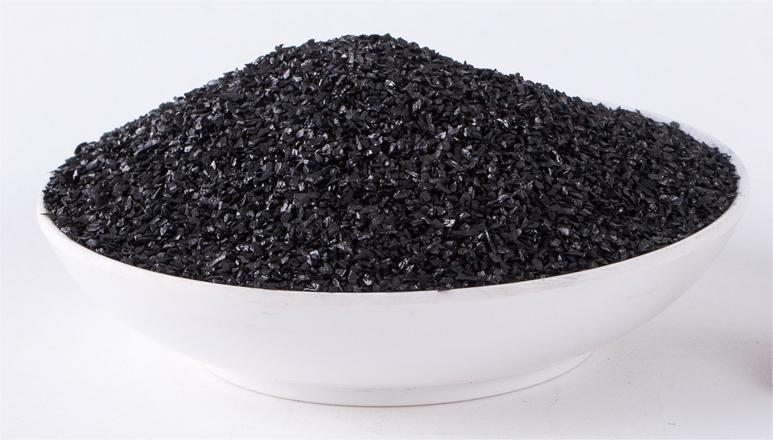Activated carbon, an essential adsorbent material, is widely used in water treatment, air purification, industrial deodorization, food and beverage decolorization, and other fields. As environmental protection standards continue to rise, the demand for activated carbon is increasing. So, how much does activated carbon cost per ton? This article will explore the factors influencing activated carbon prices and analyze the current market situation and future trends.

The price of activated carbon is influenced by several factors, so the market price may fluctuate. Below are some of the main factors that affect the cost of activated carbon:
Activated carbon can be categorized based on form and application, including granular activated carbon, columnar activated carbon, and powdered activated carbon. Each type generally comes with different price points:
Granular Activated Carbon: Commonly used in water treatment, air purification, and other fields, it is typically priced at a moderate level.
Columnar Activated Carbon: Due to its larger surface area and longer lifespan, it is more suited for gas purification applications, resulting in higher costs.
Powdered Activated Carbon: Used in liquid filtration and precision processes, it is priced according to raw materials and production methods.
The raw materials used in the production of activated carbon have a significant impact on the price. Common raw materials include coal, wood, and coconut shells, with coconut shell-based activated carbon typically being more expensive due to its higher production costs. Additionally, different production processes, such as steam activation or chemical activation, also affect the cost and ultimately the price of the final product.
The adsorption capacity of activated carbon is directly related to its surface area. The larger the surface area, the greater the adsorption capacity, and typically, the higher the price. Therefore, activated carbon used for high-performance applications, such as gas purification and high-precision water treatment, tends to be more expensive.
The price of activated carbon is also influenced by market demand and supply chain factors. As environmental regulations become more stringent and industrial gas treatment needs increase, demand for activated carbon is expected to rise, which can drive up prices. Furthermore, fluctuations in raw material costs and potential disruptions in supply chains can also affect pricing.

Hebei Huahuang Activated Carbon Co., Ltd. is a modern enterprise integrating research and development, production, sales, and service. The company is committed to providing high-quality activated carbon products used in water treatment, air purification, food decolorization, chemical adsorption, and other fields.
Hebei Huahuang Activated Carbon produces the following main types of activated carbon:
Granular Activated Carbon: Widely used in water treatment, air purification, and other general applications, offering good adsorption performance.
Columnar Activated Carbon: Suitable for high-precision applications such as industrial gas purification and deodorization, with a longer lifespan and higher efficiency.
Powdered Activated Carbon: Commonly used in liquid filtration, food decolorization, and other precision processes.
High Adsorption Efficiency: Hebei Huahuang Activated Carbon utilizes advanced production technology to ensure that its products meet the highest standards of adsorption performance for different applications.
Strict Quality Control: The company follows a strict quality management system to ensure the stability and reliability of every batch of products.
Custom Solutions: Based on the specific needs of customers, Hebei Huahuang provides tailored activated carbon solutions to meet particular industry requirements.
When selecting activated carbon products, several factors should be considered:
Application: Choose the appropriate type based on the application. For example, granular activated carbon is ideal for water treatment and air purification, while columnar activated carbon is better for gas purification and high-precision applications.
Adsorption Performance: If you need high adsorption efficiency (e.g., for high-purity filtration or removing heavy pollutants), opt for activated carbon with a larger surface area and enhanced adsorption capacity.
Cost Considerations: Select a cost-effective product that balances performance and price. When purchasing in bulk, there may be more favorable pricing.
As environmental regulations become more stringent, and with increasing demand for industrial waste gas treatment, drinking water purification, and other applications, the activated carbon market is expected to continue to grow. During this period, new high-efficiency activated carbon materials will emerge, driving the market toward more efficient and longer-lasting products, especially for industries with high-performance requirements.
Additionally, with the increasing global focus on environmental protection and sustainability, the development and production of eco-friendly activated carbon is becoming a trend. The future activated carbon market will likely emphasize green, environmentally friendly, and recyclable products.
The price of activated carbon is influenced by various factors, such as raw materials, production processes, adsorption capacity, and market demand. Understanding these factors will help you make informed decisions when selecting the appropriate activated carbon products. Whether for industrial applications or everyday use, activated carbon will continue to play an important role in improving air and water quality. If you are considering purchasing activated carbon, it is recommended to choose the product that best meets your needs, ensuring optimal purification performance.
None of our operators are available at the moment. Please, try again later.